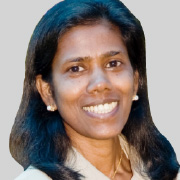Guideline development process
The Guideline development process adhered to the approach described in the Guidelines for Guidelines handbook (2016), published by the National Health and Medical Research Council (NHMRC). The Grading of Recommendations, Assessment, Development and Evaluation (GRADE) method was used to move from questions, to evidence, and then recommendations (Schünemann, 2013). A detailed account of each aspect of the Guideline development process is provided in the Administration and Technical Report that accompanies the Guideline.
Step 1: Establishing the Guideline Development Group
The first step was to establish a Guideline Development Group (GDG) to lead the research and community consultation process. To commence this process, the Co-chairs identified a range of perspectives that were critical to the development of this Guideline which focuses on autistic children’s learning, participation, and wellbeing. These perspectives included lived expertise (autistic people and parents), professional expertise (medical and allied health), expertise in working alongside Aboriginal and Torres Strait Islander communities, and expertise in human ethics. The Co-chairs also identified research expertise that would be relevant, including in relation to co-designed research, systematic reviews, community consultation, and Guideline development. Following this, the Co-chairs identified people who had knowledge, skills, and experience relevant to each of these required perspectives, and distributed invitations via email. Consideration was given to ensuring diversity within the GDG.
The GDG members are listed in Table 2. Among the 15-member group were autistic adults; parents and other family members of autistic children, including children and young adults with complex needs; people with expertise in working alongside Aboriginal and Torres Strait Islander Peoples and Communities; people with expertise in ethics and research integrity; clinicians with experience in government and non-government sectors; and researchers with expertise in the guideline development process, including community consultation. Processes were put in place to declare and manage any potential conflicts of interest, consistent with the NHMRC and GRADE methodologies.
Table 2. Members of the Guideline Development Group.

Prof Andrew Whitehouse (Co-chair)
Andrew Whitehouse is a Speech Pathologist and Angela Wright Bennett Professor of Autism at the Telethon Kids Institute and the University of Western Australia. Andrew is also the Director of CliniKids, a clinical research centre of excellence for autistic children, and is the Autism CRC’s Research Strategy Director. He brings over 20 years’ clinical research experience in working with autistic children and their families. He also brings experience in Guideline development, having chaired the development of the National Guideline for the Assessment and Diagnosis of Autism in Australia.
Andrew was the Co-chair of the Guideline Development Group.

A/Prof David Trembath (Co-chair)
David Trembath is an Associate Professor in Speech Pathology at the Menzies Health Institute Queensland, Griffith University and Honorary Research Fellow at CliniKids, Telethon Kids Institute. He brings over 20 years of clinical-research experience working with autistic children and their families.
David was the Co-chair of the Guideline Development Group.

Dr Kandice Varcin
Dr Kandice Varcin is a Research Fellow at the Menzies Health Institute Queensland, Griffith University and Honorary Research Associate at CliniKids, Telethon Kids Institute. She is also a registered psychologist who brings experience and expertise in research focused on autism, early development and the evaluation of therapies and supports for young children and their families.

Dr Hannah Waddington
Dr Hannah Waddington is a Senior Lecturer at Victoria University of Wellington and the Clinic Lead of the Victoria University of Wellington Autism clinic. She is also a practicing educational psychologist who brings experience in provision of early support to autistic children and their families.

Dr Rhylee Sulek
Dr Rhylee Sulek is a Research Fellow within the School of Health Sciences and Social Work, Griffith University. She brings experience in working with young autistic children and their families when receiving early supports and therapies, and the inclusion of key stakeholders in the co-production of research.

Ms Sarah Pillar
Sarah Pillar is the Integration Project Manager at CliniKids, Telethon Kids Institute. She has a professional background in Speech Pathology and brings experience in providing clinical services to autistic children and their families. Sarah is a PhD candidate through the University of Western Australia.

Mr Gary Allen
Gary Allen is the Senior Policy Officer Human Research Ethics and Research Integrity at Griffith University. Gary has worked in the human research ethics area since 1997, working with a number of research institutions, state and federal departments, private companies and research ethics committees internationally. He also has a degree in education and a professional doctorate in social sciences. Gary brings extensive experience in regards to the national and international governance of ethical conduct in research.

Mx Katharine Annear
Mx Katharine Annear is a founding member of the Autistic Self Advocacy Network of Australia and New Zealand, a registered Developmental Educator, and Casual Academic at Flinders University. They bring lived experience as an Autistic person who also has numerous Autistic family members, and are a passionate advocate for co-design in research and public policy and the translation of research and policy into meaningful practice for disabled people.

Prof Valsamma Eapen
Professor Valsa Eapen is the Chair of Infant, Child and Adolescent Psychiatry at the University of New South Wales. An internationally-recognised child psychiatrist and researcher, Valsa’s expertise combines extensive experience in childhood mental health and developmental disorders from a clinical and basic science research perspective.

Ms Jessica Feary
Jess Feary is the Victoria and Tasmania Coordinator for Positive Partnerships. She has a background in occupational therapy and public health and brings over 15 years’ experience working with neurodiverse people and their families in clinical, research, policy and educational settings.

Dr Emma Goodall
Dr Emma Goodall is an autistic author, advocate, qualified meditation and mindfulness teacher and adjunct research fellow at the University of Southern Queensland. She is the Manager for Content & Research for Positive Partnerships and also runs Healthy Possibilities, a consultancy offering personal life coaching alongside autism specific continuing professional development for educators and families and National Disability Insurance Scheme (NDIS) services (many with a link to interoception). Emma speaks widely on the topic of interoception and the role mindful body awareness plays in emotional regulation.

Ms Teresa Pilbeam
Teresa Pilbeam is a special education teacher, an advocate for informal family carers, and has worked alongside First Nations peoples across Australia. Teresa has 30 years’ experience in special education, contributed to carer and disability reform for over 10 years, is an Independent Director on government and profit-for-purpose state and federal councils and boards, and has a lived experience of autism spectrum and complex disability. Teresa brings experience and expertise of governance, ways of working with Aboriginal and Torres Strait Islander Peoples, and an enthusiasm for enabling the voice of informal family carers to be heard in cross-sector conversations.

Dr Felicity Rose
Dr Felicity Rose is a Project Manager at Telethon Kids Institute. Her current project is to further implement the National Guideline for the Assessment and Diagnosis of Autism into clinical practice. She has a professional background in science and research and is also the parent of a young person on the autism spectrum.

Dr Nancy Sadka
Dr Nancy Sadka is a Research Fellow at the Olga Tennison Autism Research Centre, La Trobe University. She works in the early identification and diagnosis of autism and is an advocate for families and children on the spectrum over the life span. She also is the mother of two autistic children and brings to the GDG over 25 years of lived experience.

Dr Natalie Silove
Dr Natalie Silove is a Clinical Associate Professor in the Discipline of Paediatrics and Child Health, University of Sydney and Senior Lecturer (Conjoint) at the School of Psychiatry (UNSW). She is also the Head of Child Development Services; Senior Staff Specialist, Child Development Unit at The Children’s Hospital Westmead. She brings over 30 years experience working with children and young adults with special needs, their families and schools.
To support its work in community consultation, the GDG formed a Reference Group, comprising representatives from organisations with members that play a critical role in supporting aspects of children’s health, development, education, participation, and wellbeing, and/or supporting parents and families in raising autistic children; that represent Aboriginal and Torres Strait Islander Peoples, and represent Culturally and Linguistically Diverse communities; or that were from the key Government agency, the National Disability Insurance Agency. Members of the Reference Group, and the national peak bodies they represented, are listed in Table 3.
Stakeholder group | National peak body | Representative | Position |
|---|---|---|---|
Autistic people | Autistic Self Advocacy Network – Australia and New Zealand | Lisa Smith (first two meetings) | Member |
Family members of autistic people | Autism Awareness Australia | Nicole Rogerson | Founding Chief Executive Officer |
First Nations peoples | National Aboriginal Community Controlled Health Organisation | Jess Styles | Director, Programs |
Culturally and linguistically diverse communities | Federation of Ethnic Communities’ Council of Australia | Daniel Coase | Senior Advisor |
Focusing on children’s health | Neurodevelopmental and Behavioural Paediatrics Society of Australasia | Ashanthi Munasinghe | Member |
Focusing on children’s social-communication development | Speech Pathology Australia | Amy Fitzpatrick | Senior Advisor Disability |
Focusing on children’s physical development | Australian Physiotherapy Association | Nicole Haynes | Member |
Focusing on children’s cognitive development and mental health | Australian Psychological Society | Tamara Cavenett | President |
Focusing on children’s sensory development and occupations of childhood | Occupational Therapy Australia | Karen Brown | Division Manager (ACT, NSW) |
Representing service providers (peak body) | Australian Autism Alliance | Frances Scodellaro | Member |
Representing services (early childhood) | ReImagine Australia (formerly Early Childhood Intervention Australia) | Trish Hanna | Board Chair |
Representing services (education) | Australian Association of Special Education | Patrick Kelly | President |
Representing services (rural health) | National Rural Health Alliance | Gabrielle O’Kane | Chief Executive Officer |
Representing researchers | Australasian Society for Autism Research | Jessica Paynter | Vice President |
Representing policy advisors | Autism Advisory Group to the National Disability Insurance Agency | Jim Mullan | Member |
Government | National Disability Insurance Agency | Sam Bennett | General Manager Policy, Advice and Research |
Step 2: Defining Guideline questions
The GDG formulated a set of questions about key aspects of clinical practice that would be the focus of all research and consultation activities, and ultimately the recommendations. These questions are presented in Table 4. The GRADE framework typically recommends the formulation of questions structured in a PICO format (Patient, Intervention, Comparison, Outcome). However, because of the purpose and objectives of the current Guideline, the relevance of PICO questions to the aspects of practice considered, and the nature and availability of research evidence that would inform the answers to the questions, the questions for this Guideline were structured around aspects of professional practice that impact on the experiences and outcomes for children and families in accessing supports. For this same reason, the Recommendations included in the Guideline are considered Consensus-Based Recommendations, drawing on evidence from the research literature, combined with evidence collected through extensive community consultation.
Section | Question |
|---|---|
Overarching principles | What guiding principles should be followed when providing supports to autistic children and their families? |
Goal setting | What are appropriate goals for supporting children and families? |
How should goals be selected? | |
Selecting and planning supports | What types of supports might be relevant to children and families? |
How should supports be selected? | |
What knowledge and skills are required to plan supports? | |
Delivering supports | Who should deliver supports? |
What knowledge and skills are required to deliver supports? | |
Who should receive supports? | |
In what settings should supports be delivered? | |
In what formats and modes should supports be delivered? | |
In what amount and duration should supports be delivered? | |
How should practitioners engage with other service providers and service systems? | |
Outcomes, quality and safeguarding | How should the effects of supports be monitored and reviewed? |
How can the risk of adverse effects be reduced? | |
How should adverse effects be managed? | |
How should the rights of children and families be protected? |
Step 3: Gathering evidence
Evidence can take many forms. For this Guideline, there was a concerted effort to gather evidence through systematic reviews of the research evidence alongside extensive community consultation. Evidence was gathered over a 9-month period (October 2021 to June 2022) using a structured research process. Ethical approval for the community consultation activities was procured through the Griffith University Human Research Ethics Committee (2021/843). The day-to-day work in gathering evidence was primarily undertaken by six members of the GDG: Sarah Pillar, Rhylee Sulek, David Trembath, Kandice Varcin, Hannah Waddington and Andrew Whitehouse. The literature reviews and community consultation activities are described in detail in the Administration and Technical Report. In brief, these activities comprised the following:
Literature reviews
Three systematic literature reviews were undertaken to synthesise current research evidence in three areas. First, a systematic scoping review was conducted to explore and map the breadth of principles and recommendations made within existing clinical guidelines for autism. There were 14 English-language guidelines that were included within this scoping review. Second, a systematic review was undertaken to identify and explore research relating to the experiences of autistic individuals and their family members accessing supports during childhood in Australia. There were 12 research articles that met inclusion criteria and were reviewed. Third, an umbrella review (a systematic review of systematic reviews) was conducted to synthesise data regarding the effects of different supports on a range of child and family outcomes. There were 48 systematic reviews that met study inclusion criteria and were reviewed.
Community consultation activities
A series of community consultation activities were conducted. These activities provided a range of opportunities for community members in Australia to give input into the Guideline development process in a way that suited their needs and preferences. The community consultation activities were advertised through the Autism CRC mailing list and traditional and social media networks. The community consultation activities are described in further detail in Appendix B. In brief, these activities were:
- An online survey designed to understand the experiences of members of the autistic and autism communities in accessing supports, and their views on good practice.
- A brief online survey designed to understand the views of autistic children in accessing supports.
- A brief online survey designed to ask parents to reflect on their view of their autistic children’s experience accessing supports.
- A consultation activity involving the creation of art, which was designed to engage autistic children and adults who may communicate, or prefer to communicate, through ways other than spoken language.
- A practitioner survey designed to understand areas of consensus for various aspects of clinical practice in supporting autistic children and their families. This followed a Delphi format, with two survey rounds.
- A series of focus groups designed to provide opportunity for further detailed discussion on the experiences of members of the autistic and autism communities in accessing supports, and their views on good practice.
Step 4: Moving from evidence to recommendations
An iterative process, built around an Evidence to Decision framework, was used to move from evidence to recommendations (Alonso-Coello, Oxman et al., 2016; Alonso-Coello, Schünemann, et al., 2016). The process was led within the GDG by a Draft Recommendations Working Group (DRWG; Sarah Pillar, Rhylee Sulek, David Trembath, Kandice Varcin, Hannah Waddington and Andrew Whitehouse), and is summarised here. A detailed explanation is provided in the Administration and Technical Report.
Iteration 1: Practice statements
The DRWG developed a set of practice statements relating to each of the Guideline questions. The statements took the same form as those used in Round 1 of the Delphi survey, where practitioner consensus on these statements had already been reached.
The DRWG then independently reviewed these statements against the following sources of evidence:
- Evidence emerging from the systematic review of existing guidelines, the umbrella review of existing research evidence, and the systematic review of children’s and families’ experience of accessing supports.
- Other relevant research (e.g., neurodiversity-affirming practice, other international reviews of research evidence).
- Conceptual and ethical frameworks (e.g., Australian Institute of Aboriginal and Torres Strait Islander Studies [AIATSIS] Code of Ethics for Aboriginal and Torres Strait Islander Research, 2020; International Classification of Functioning, Disability and Health, World Health Organisation, 2001).
- Regulations (e.g., National Disability Insurance Scheme Practice Standards and Quality Indicators, 2021).
- Reports (e.g., Disability Royal Commission Interim Report, 2020).
- Conventions (e.g., United Nations Convention on the Rights of the Child, 1989).
During the independent review, each member made a list of suggested edits (additions, deletions, amendments) which were then raised and resolved at a meeting of the DRWG. The first iteration of the statements was shared with the broader GDG, discussed at the monthly meeting, and suggested edits documented.
Iteration 2: Draft recommendations
The DRWG incorporated the feedback from the broader GDG and revised the statements into a set of preliminary recommendations, supported by evidence tables. To do this, the DRWG members independently reviewed the statements against the complete set of evidence from the community Consultation process, which included the:
- Online community survey.
- Brief online survey.
- Focus groups.
- Parent reflections.
- Delphi survey Round 2.
Each member made a list of suggested edits (additions, deletions, amendments) which were then raised and resolved at a meeting of the DRWG. The DRWG also compiled evidence summary tables that were shared with the GDG, alongside the draft Recommendations. The GDG provided feedback at the monthly meeting and via suggestions in shared documents, which were subsequently incorporated.
Iteration 3: Grade of Recommendation judgments
In the third iteration, the DRWG further revised the recommendation statements, with a focus on creating plain language wording to the extent possible. The DRWG also independently completed a review and judgement of each Recommendation against the seven criteria required within the GRADE Evidence to Decision framework (Alonso-Coello, Oxman et al., 2016; Alonso-Coello, Schünemann, et al., 2016). The judgements related to certainty of evidence, benefits and risks, values and preferences, resource implications, equity considerations, acceptability, and feasibility. The judgements occurred over three rounds, with the first involving independent review, followed by two rounds of consensus review.
Based on the judgements, each Recommendation was then classified as either a ‘strong’ Recommendation or a ‘conditional’ Recommendation, as per the GRADE process and reflecting the confidence in the clarity of the balance between desirable and undesirable consequences. In the case of this Guideline, ‘conditional’ Recommendations indicated: uncertainty around alignment with values and preferences of children and families; a possible reduction in health equity across populations; uncertainty around the acceptability of the Recommendation for practitioners; and/or a possible lack of feasibility in implementation. The classifications reflect the judgements of the GDG, based on the available evidence and other relevant considerations such as alignment with international conventions. The complete set of judgements is provided in the Supporting Evidence document accompanying this Guideline.
The grade of Recommendations do not reflect whether a Recommendation should be implemented or prioritised. All Recommendations within the Guideline represent good practice and should be implemented. Rather, the grade of Recommendations (strong, conditional) is intended to support users in considering a range of factors when implementing a given Recommendation, such as the benefits and harms, resources needed, and the acceptability to children, families, and practitioners. A grading of a Recommendation as ‘conditional’ reflects a judgment that there are key factors to consider during implementation. Further information on the grading of each Recommendation is provided in the Supporting Evidence document.
Iteration 4: Draft Guideline
The DRWG prepared the Draft Guideline and shared it with the GDG, alongside the complete set of evidence summaries and Evidence to Decision (EtD) judgements, as well as an Easy Read summary of the Guiding Principles Recommendations. The Easy Read summary was drafted by Katharine Annear, with review by the DRWG and formatting provided by Autism CRC. These documents were reviewed and then discussed by members at a meeting of the GDG. The GDG endorsed the documents, subject to further minor edits and formatting.
Step 5: Public consultation on Draft Guideline
The GDG prepared the Draft Guideline and supporting documents (Summary of Evidence, Administration and Technical Report, and Easy Read summary) for public consultation, which opened on 18th July 2022 and closed on 29th August 2022 (a 6-week period).
Ahead of public consultation
The public consultation on the Draft Guideline complied with Section 74A of the Commonwealth National Health and Medical Research Council Act 1992 and accompanying regulations. The following activities were undertaken ahead of the public consultation period:
- Autism CRC updated its webpage devoted to the Guideline development to reflect the upcoming consultation period and invitation to participate.
- Autism CRC announced the upcoming public consultation period, via email distributed to people who had registered specifically for updates on the Guideline, as well as people who were on the Autism CRC communications database more broadly. Key professional and consumer organisations were identified through the Reference Group and were invited to provide feedback. Further announcements were made via Autism CRC social media, and then re-posted by GDG members.
- Autism CRC hosted a 1-hour free online community webinar, presented by the GDG Co-chairs, to share the purpose, rationale, scope, and methodology employed in developing the Draft Guideline as well as information on how to engage in the public consultation. All people who registered to attend the webinar were sent a link to the recording which was also posted on the Autism CRC website.
- A Co-chair of the GDG emailed the Office of the Director General, Chief Executive or Secretary of each state, territory, and Commonwealth Health Department to prepare those offices for the publication of the Draft Guideline on 11th July 2022. These offices were then directly emailed the Draft Guideline on the 18th July 2022.
During public consultation
During public consultation, Autism CRC:
- Updated its website to include:
- A video explaining the public consultation process, and how people could participate.
- Direct links to the Draft Guideline, Summary of Evidence, Administration and Technical Report, and Easy Read summary.
- A link to participate in an online feedback survey.
- Announced the opening and closing of the public consultation period via email and social media.
- Sent reminders inviting participation throughout the public consultation period.
Feedback survey
Public consultation feedback was collected via a custom online survey developed by the GDG and delivered via REDCap (hosted by Griffith University). The survey comprised three sections, commencing with a Participant Information Statement and Consent Form, followed by an opportunity to provide general feedback on the Guideline sections, and then the option to provide specific feedback on one or more Recommendations and associated Good Practice Points. Participants were able to choose the number of questions they answered. Furthermore, participants were able to choose whether to provide feedback as an individual, or on behalf of an organisation. Where feedback was provided on behalf of an organisation, a copy of the survey was available for download to assist those completing the survey to compile feedback within their organisation.
The feedback survey was accessed 333 times during the consultation period. Of those who provided a response, 105 participants indicated they were providing feedback as an individual, and 58 participants indicated they were providing feedback on behalf of an organisation. Of the 105 responses provided by individuals, 55 (52%) individuals provided responses beyond participant demographics and were therefore considered by the GDG. Of the 58 responses provided on behalf of an organisation, 35 (60%) included demographic information about the organisation and so were considered by the GDG. Further information about the feedback survey is provided in the Administration and Technical Report.
Independent review: AGREE-II
As per NHMRC Guidelines for Guidelines, the GDG arranged for the Draft Guideline to be reviewed by two independent researchers with experience with the Appraisal of Guidelines for Research & Evaluation Instrument (AGREE-II) checklist: Dr Bahareh Afsharnejad (Curtin University) and Dr Kiah Evans (University of Western Australia).
Independent Review: NHMRC
The NHMRC organised independent review of the Guideline:
- Two reviewers with methodological expertise in guideline development reviewed the methodology and provided feedback using a standard form supplied by NHMRC. These reviewers focused on the extent to which the Draft Guideline complied with the NHMRC Standards for Guidelines.
- Two reviewers with content expertise reviewed the Guideline using a standard form supplied by NHMRC. These reviewers focused on the extent to which the Draft Guideline aligned with the scope and clinical questions posed by the Guideline, whether the Guideline Recommendations adequately consider the risks and potential harms of clinical practice, and whether there are relevant international guidelines on the same topic that conflict with the Recommendations of this Guideline.
Health Department Review
The Office of the Director General, Chief Executive or Secretary of each state, territory, and Commonwealth Health Department were invited to provide feedback on the Draft Guideline, in a form of their choosing (e.g., letter).
Step 6: Analysing Feedback and Revisions
All feedback received through public consultation and independent review was considered and used to inform revisions to the Guideline where relevant, in a systematic manner.
Feedback survey
The GDG reviewed and responded to each piece received through the online feedback portal through a structured process.
- Both Co-chairs reviewed all feedback received.
- Feedback was then grouped into the relevant Guideline sections, and was allocated to one of six members of the DRWG for more detailed review. Where feedback referred directly to a member of the DRWG by name or affiliation (e.g., the DRWG member’s employer), that member excluded themself from review of that feedback.
- The DRWG members first categorised feedback as either requiring no changes to the Draft Guideline or possible changes to the Draft Guideline. A second member of the GDG then reviewed the proposed response, and the two members made a consensus decision as to whether or not a change should be made. Any disagreements were taken to the broader DRWG.
- Any proposed changes to the Draft Guideline were also brought to the six-member DRWG, where a broader consensus decision was made.
- Where changes were agreed to, a member of the DRWG drafted the change in the Guideline document, and all corresponding points in the Administration and Technical Report, Evidence Summaries, and Easy Read summary of the Guiding Principles.
- A second reviewer within the DRWG reviewed the proposed change and either endorsed or resolved any differences in views on how to approach the change via consensus. Every change was reviewed by all six members of the DRWG.
- The DRWG members compiled feedback tables in which they provided a response to each comment received through the online feedback portal including, where relevant, an explanation of why a change to the Guideline was or was not made, as well as the nature of the change where that had occurred. Each response in the feedback tables was reviewed by a second member of the DRWG and either endorsed or revised via consensus. The Co-chairs reviewed the complete set of feedback and DRWG responses. The feedback tables are provided in the Public Consultation Summary, published with the Guideline.
Independent review: AGREE-II
All feedback was considered by members of the DRWG and changes made where relevant (e.g., suggestions for further elaboration on aspects of the methodology).
Independent Review: NHMRC
All feedback was considered by members of the GDG and changes made where relevant. A copy of the reviewer feedback and the GDG’s response is provided in the Public Consultation Summary document that accompanies the Guideline.
Health Department Review
All feedback was considered by members of the DRWG and changes made where relevant. A copy of feedback received and the GDG’s response is provided in the Public Consultation Summary document that accompanies the Guideline.
Guideline Development Group review of feedback and changes
All GDG members were provided with a penultimate draft of the Guideline with all changes highlighted and accompanying comments that explained the changes made. The GDG members were also provided with the complete set of feedback from the feedback survey, with feedback that had resulted in changes to the Guideline highlighted. GDG members were invited to provide feedback, including raising any issues for further discussion, via email, in text-suggested edits and comments, or via discussion at the monthly meeting (September, 2022) of the GDG.
The feedback from the independent content reviewers, commissioned by NHMRC, was provided to the GDG on 16/09/22, which was following the GDG meeting (09/09/22). Accordingly, the DRWG reviewed and responded to this feedback using the same method outlined above. The GDG were provided with a summary of the final changes and a copy of all Guideline documents on 21/09/22. Once satisfied, each member of the GDG confirmed their endorsement of the documents via email to the GDG Co-chairs.
